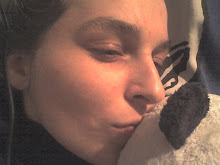Kohut is right
[...]
Kohut expanded on his theory during the 1970s and 1980s, a time in which aggressive individuality, overindulgence, greed, and restlessness left many people feeling empty, fragile, and fragmented.[2]
Perhaps because of its positive, open, and empathic stance on human nature as a whole as well as the individual, self psychology is considered one of the "four psychologies" (the others being drive theory, ego psychology, and object relations); that is, one of the primary theories on which modern dynamic therapists and theorists rely. According to biographer Charles Strozier, "Kohut...may well have saved psychoanalysis from itself."[2] Without his focus on empathic relationships, dynamic theory might well have faded in comparison to one of the other major psychology orientations (which include humanism and cognitive behavioral therapy) that were being developed around the same time.
Also according to Strozier, Kohut's book The Analysis of the Self: A Systematic Analysis of the Treatment of the Narcissistic Personality Disorders [3] "had a significant impact on the field by extending Freud's theory of narcissism and introducing what Kohut called the 'selfobject transferences' of mirroring and idealization." In other words, children need to idealize and emotionally "sink into" and identify with the idealized competence of admired figures. They also need to have their self-worth reflected back ("mirrored") by empathic and caregiving others. These experiences allow them to thereby learn the self-soothing and other skills that are necessary for the development of a healthy (cohesive, vigorous) sense of self. For example, therapists become the idealized parent and through transference the patient begins to get the things he has missed. The patient also has the opportunity to reflect on how early the troubling relationship led to personality problems. Narcissism arises from poor attachment at an early age. Freud also believed that narcissism hides low self esteem, and that therapy will reparent them through transference and they begin to get the things they missed. Later, Kohut added the third major selfobject theme (and he dropped the hyphen in selfobject) of alter-ego/twinship, the theme of being part of a larger human identification with others.
Though dynamic theory tends to place emphasis on childhood development, Kohut believed that the need for such selfobject relationships does not end at childhood but continues throughout all stages of a person's life.[...] http://en.wikipedia.org/wiki/Heinz_Kohut
[...]Thus Kohut emphasises that 'to be...the maintenance of even the diseased remnants of the self is preferable to not being, that is, to accept the takeover of another's personality rather than his actively elicited responsiveness'. Similarly, he stressed that 'there is a decisive difference between the support of selfobjects that are sought after and chosen by a self in harmony with its innermost ideals...and the abandoning of oneself to a foreign self, through which one gains borrowed cohesion at the price of genuine initiative and creative participation in life'.[...]http://en.wikipedia.org/wiki/True_self_and_false_self#Kohut




0 Comments:
Post a Comment
Subscribe to Post Comments [Atom]
<< Home